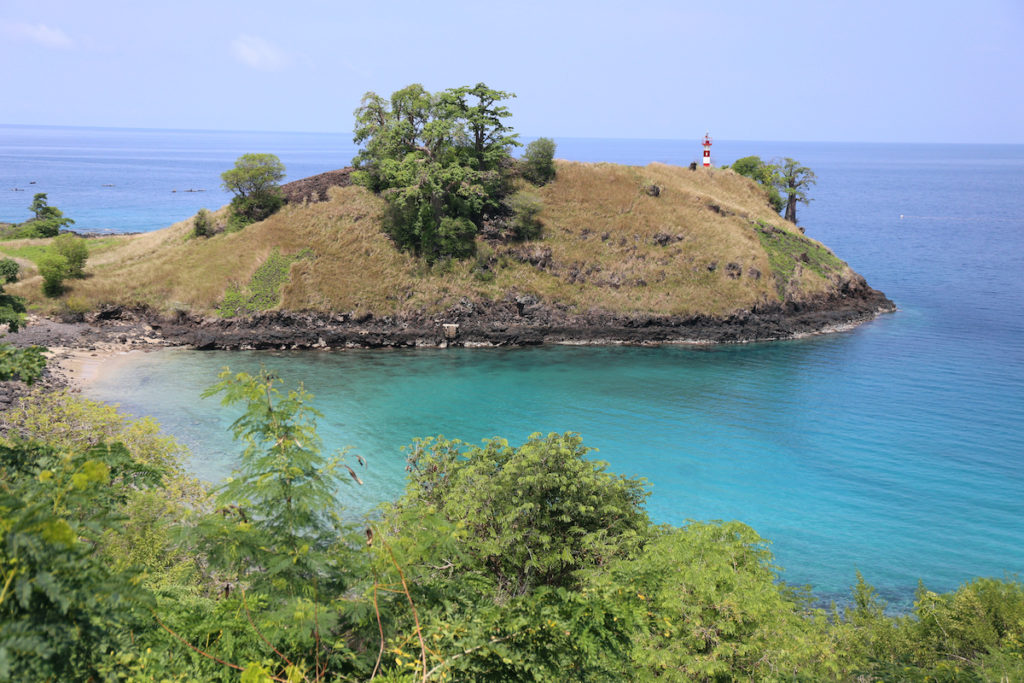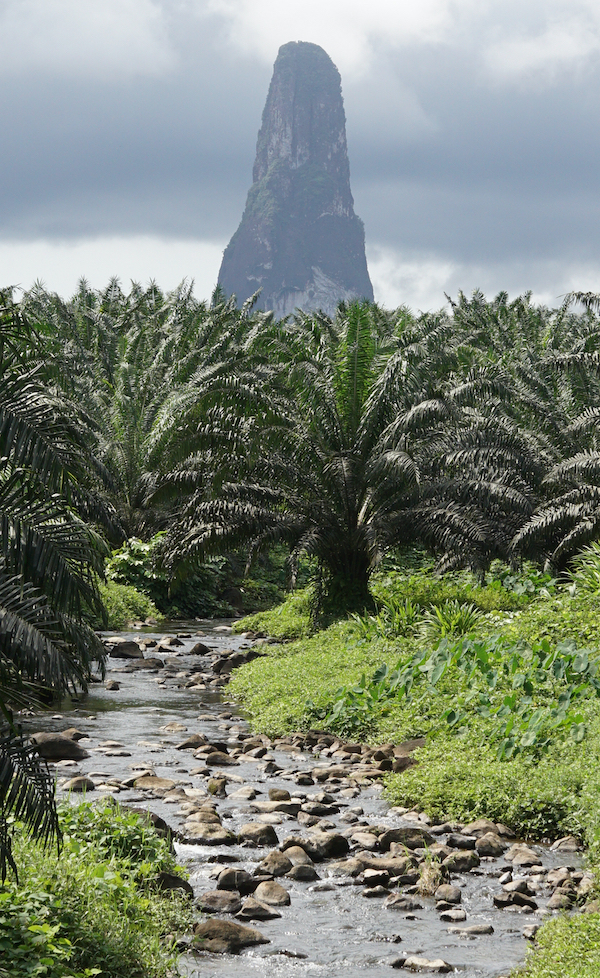Climate
São Tomé and Príncipe lie in the Gulf of Guinea, some 250km west of Gabon. The islands form part of the 1,200km Cameroon Line volcanic chain, which stretches southwest from the Jos Plateau in Nigeria and includes Bioko (formerly Fernando Pó), Príncipe, São Tomé, and Annobón (formerly Pagalu). Both Bioko and Annobón belong to Equatorial Guinea.
At 1,001km2, São Tomé and Príncipe is the second-smallest country in Africa after the Seychelles; it is roughly three-quarters the size of Greater London, or a third of Rhode Island state. Nicknamed the ‘Centre of the World’, it is the closest landmass to the point in the Atlantic where the imaginary line of the Equator crosses the zero meridian. The larger island, São Tomé, has a surface area of around 854km2, while some 150km to the northeast, Príncipe is about six times smaller (142km2).

While the equatorial climate means maximum average daily temperatures of 27°C to 29°C, there is a massive difference in rainfall across these small islands. The dry savannah area in the rain-shadow to the northeast of São Tomé, including the capital, receives only around 60cm of rain per year, whereas the mountainous southern and western parts, in the path of the mainly southwesterly winds, receive about 6m. Of the two islands, Príncipe has the wetter climate, again with the south of the island receiving much more rain. Most rain falls in March and April.
When to visit São Tomé and Príncipe
While you can visit the islands at any time of year, the most popular time is during one of the two dry seasons, either between June and September, or between December and February. Temperatures on the islands hover around 27 ̊C all year round, but the summer months of the long dry season, gravana, are the best time for hiking and birdwatching. July–August visitors in particular have a good chance to catch popular saints’ feast days and cultural events, where the streets throng with stalls, open-air discos and entertainment; don’t miss the unique tchiloli and Danço Congo dramatic performances. Mid-August, around the St Laurent’s festivities, is an ideal time to visit Príncipe.
Another good option is the short dry season, gravanita, which lasts from around mid-January to mid-February, including carnival celebrations which are a good opportunity to see traditional dances. This period is good for birdwatching too, as the birds are sporting their mating plumage. Between November and March visitors may watch marine turtles laying their eggs, and hatchlings being returned to the sea between September and April. Divers will find best visibility between December and March. However, January, February and March are the hottest months of the year, with the dry and dusty winds blowing sand from the Sahara into the Gulf of Guinea, often clouding the scenery in a ‘Harmattan’ haze, locally called bruma seca.

In the rainy season (October, November, April and May), hiking becomes tricky on muddy terrain and the air is heavy with humidity, but photographers will find better light, blue skies and brighter contrasts. Days can be a mixed bag: you might get rain in the morning, then a beautiful afternoon, with blue skies and the air feeling fresh after the tropical downpour, then a more cloudy evening with some rain, or a string of days where it only rains in the afternoons and evenings. The rainy season is best for orchid spotting, but if you want to see orchids and still be comfortable hiking, a lot of the species growing above 800m are still in flower in January.